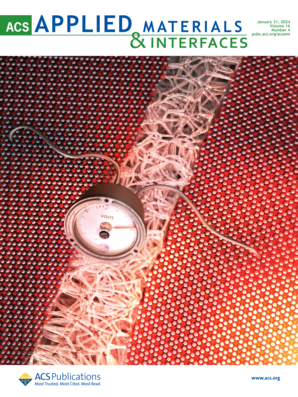Synergistic Boiling Enhancement on Hierarchical Micro-Pit/Carbon Nanotube Surfaces.
IF 8.3
2区 材料科学
Q1 MATERIALS SCIENCE, MULTIDISCIPLINARY
引用次数: 0
Abstract
Pool boiling offers exceptional heat transfer performance, making it crucial for advanced thermal management. However, simultaneously optimizing both critical heat flux (CHF) and heat transfer coefficient (HTC) is challenging due to the inherent trade-off between promoting bubble nucleation and mitigating detrimental bubble coalescence. This study presents a micro/nano-hierarchical surface architecture designed to overcome this limitation. Fabricated via laser machining and chemical vapor deposition, the architecture comprises an array of micro pits (MPs) decorated with Co-catalyzed carbon nanotubes (CoCNTs). Computational fluid dynamics (CFD) simulations demonstrate that the MP array enhances HTC by increasing the density of nucleation sites and reducing the bubble departure diameter. Simultaneously, the CoCNTs within the MPs enhance interfacial heat transfer and promote capillary-driven liquid replenishment to the heating surface, effectively mitigating dry-out and significantly improving CHF. The synergistic effects of these micro/nanofeatures yield remarkable performance enhancements on Cu substrates, with the HTC and CHF increasing by 211.5% and 125.2%, respectively, compared to a bare Cu surface. This hierarchical surface design offers a promising strategy for developing high-performance boiling heat transfer surfaces for next-generation thermal management applications.层状微坑/碳纳米管表面的协同沸腾强化。
池沸腾提供了卓越的传热性能,使其对先进的热管理至关重要。然而,同时优化临界热流密度(CHF)和传热系数(HTC)是具有挑战性的,因为在促进气泡成核和减轻有害气泡合并之间存在固有的权衡。本研究提出了一种微/纳米层次表面结构,旨在克服这一限制。该结构通过激光加工和化学气相沉积制成,由一系列微坑(MPs)组成,表面装饰有co催化的碳纳米管(cnts)。计算流体动力学(CFD)模拟表明,MP阵列通过增加成核点密度和减小气泡偏离直径来增强HTC。同时,MPs内的碳纳米管增强了界面传热,促进了毛细管驱动的液体补充到受热面,有效缓解了干燥,显著改善了CHF。这些微/纳米特征的协同效应在Cu衬底上产生了显著的性能增强,与裸Cu表面相比,HTC和CHF分别增加了211.5%和125.2%。这种分层表面设计为开发下一代热管理应用的高性能沸腾传热表面提供了一种有前途的策略。
本文章由计算机程序翻译,如有差异,请以英文原文为准。
求助全文
约1分钟内获得全文
求助全文
来源期刊

ACS Applied Materials & Interfaces
工程技术-材料科学:综合
CiteScore
16.00
自引率
6.30%
发文量
4978
审稿时长
1.8 months
期刊介绍:
ACS Applied Materials & Interfaces is a leading interdisciplinary journal that brings together chemists, engineers, physicists, and biologists to explore the development and utilization of newly-discovered materials and interfacial processes for specific applications. Our journal has experienced remarkable growth since its establishment in 2009, both in terms of the number of articles published and the impact of the research showcased. We are proud to foster a truly global community, with the majority of published articles originating from outside the United States, reflecting the rapid growth of applied research worldwide.
 求助内容:
求助内容: 应助结果提醒方式:
应助结果提醒方式:


